I have very few data points and I want to create a line to best fit the data points when plotted in a semilogy scale. I have tried curve-fit and cubic interpolation from scipy, but none of them seems to be very reasonable to me compared to the data trend.
I would kindly ask you to check if there is a more efficient way to create a straight line fit for the data. Probably extrapolation can do, but I did not find a good documentation on extrapolation on python.
your help is very appreciated
import sys
import os
import numpy
import matplotlib.pyplot as plt
from pylab import *
from scipy.optimize import curve_fit
import scipy.optimize as optimization
from scipy.interpolate import interp1d
from scipy import interpolate
Mass500 = numpy.array([ 13.938 , 13.816, 13.661, 13.683, 13.621, 13.547, 13.477, 13.492, 13.237,
13.232, 13.07, 13.048, 12.945, 12.861, 12.827, 12.577, 12.518])
y500 = numpy.array([ 7.65103978e-06, 4.79865790e-06, 2.08218909e-05, 4.98385924e-06,
5.63462673e-06, 2.90785458e-06, 2.21166794e-05, 1.34501705e-06,
6.26021870e-07, 6.62368879e-07, 6.46735547e-07, 3.68589447e-07,
3.86209019e-07, 5.61293275e-07, 2.41428755e-07, 9.62491134e-08,
2.36892162e-07])
plt.semilogy(Mass500, y500, 'o')
# interpolation
f2 = interp1d(Mass500, y500, kind='cubic')
plt.semilogy(Mass500, f2(Mass500), '--')
# curve-fit
def line(x, a, b):
return 10**(a*x+b)
#Initial guess.
x0 = numpy.array([1.e-6, 1.e-6])
print optimization.curve_fit(line, Mass500, y500, x0)
popt, pcov = curve_fit(line, Mass500, y500)
print popt
plt.semilogy(Mass500, line(Mass500, popt[0], popt[1]), 'r-')
plt.legend(['data', 'cubic', 'curve-fit'], loc='best')
show()



